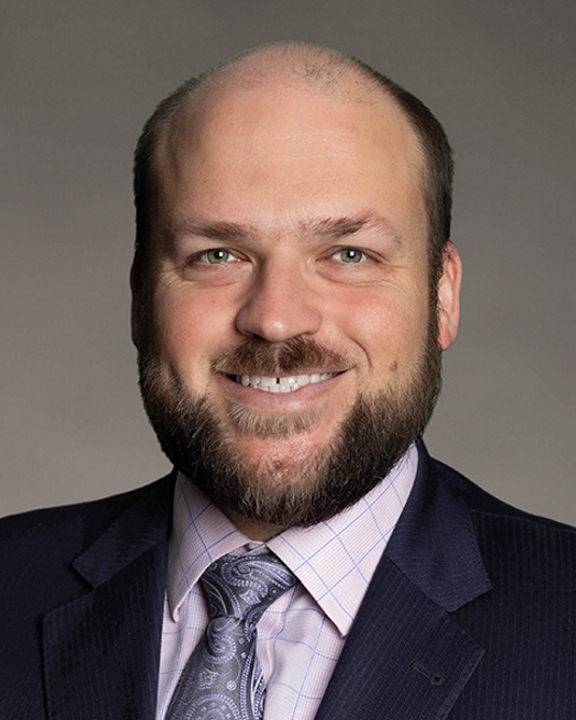With the heaviest burdens of the pandemic falling disproportionately on Californians who are low-income Black and Latino and on frontline workers, the need to implement targeted solutions to address long-standing Social Drivers of Health (SDoH) and health equity is at an all-time high. This is reinforced by the principles and goals of California’s newest Medicaid waiver, California Advancing and Innovating Medi-Cal (CalAIM) and the State’s first ever, competitive Medi-Cal managed care procurement process.1,2 Achieving success in reducing SDoH disparities and impacts on health requires improved access for providers to meaningful, complete data. A key aspect to ensure data availability and quality is to collect and share such data in a standardized manner across clinical and non-clinical providers.
As CalAIM enters its third quarter of implementation, the program has expanded statewide and managed care plans have awarded the first, and in some cases, the second round of Incentive Payment Program (IPP) funds. These funds are intended to support infrastructure (including SDoH & health equity data collection & reporting), expand provider capacity and align performance to key performance metrics defined by the Department of HealthCare Services (DHCS). While MCPs are making headway in completing outreach and enrollment for Enhancement Care Management, closing the data gap remains a top priority, as identified in Health Net’s early lessons issue brief: Bridging the Divide.3
The combination of these statewide initiatives make this the most ambitious program to date and both payers and providers need to chart a clear path to ensure success.
One: Population Health Management Framework
A principal component of CalAIM is a centralized, statewide Population Health Management (PHM) framework to be implemented by DHCS. Finalized in July, the PHM framework includes an ambitious plan to standardize and expand a common set of tools and supports for managed care plans, clinical and non-clinical providers, as well as members. This broad reaching program will aim to consolidate disparate information sources and improve access to comprehensive, longitudinal data, with the inclusion of an open-source risk-stratification tool to better enable organizations to understand population and individual member needs. The PHM go-live is scheduled for January 2023 with full implementation by July 2023.
The vision is to meet people where they are in life, address social drivers of health (SDOH), and break down barriers to health care access and wellness. To this end, DHCS and MCPs, with the collective support of the State’s provider communities will need to work together to identify, measure, and develop solutions that address outcome differences by race, ethnicity, language, and other factors to advance health equity.4
Two: Competitive Medi-Cal Managed Care Procurement Process
To provide financial alignment to these efforts, the recent Medi-Cal (Medicaid) managed care procurement process, of which intended awardees were announced last week, is not only increasing the rigor and oversight for clinical and quality improvement, if quality metrics are not met, MCPs will be required to allocate an additional 7.5 percent of their annual net income to community reinvestment. It is estimated that just under 20%, or 2.3 million Medicaid beneficiaries across the state will be impacted by this procurement, which will take effect in January 2024. The same tenets underpinning CalAIM’s goals run through the procurement requirements, including addressing health equity and SDoH:
- The delivery of culturally competent care and access to providers, and coordination of care across settings and at all levels.
- All MCPs will be expected to engage and coordinate with local community partners, invest resources into the community, and make public their performance and health equity activities.
- High-quality, accessible, and comprehensive care across all settings and levels of care.
- Reducing health disparities and improving health outcomes.
- Transparency by making available information and insights to support plan choice.
Three: Statewide Data Exchange Framework
In addition to CalAIM, the State’s Data Exchange Framework (AB 133), signed into law last year will require health care providers to begin sharing data in 2024, with rolling participation requirements extending to all providers by January 2026.5 To support this digital transformation, the State has allocated $250 million to provide technical assistance and infrastructure funding.
As with other statewide health information exchanges, while California’s data exchange framework will improve the level of data sharing across the state, it does not fully encompass the broader set of community providers and data types needed to fully address SDoH and corresponding services. Early models of “Community Information Exchanges (CIEs),” including a pioneering effort led by San Diego’s 211 have begun to shape this concept in practice, and with the support of statewide initiatives like CalAIM, will continue to expand and impact a wider spectrum of providers and services.6
How Managed Care Plans are Advancing SDoH & Health Equity Data Collection & Reporting
While the range of possible measures to collect is vast, to the PHM implementation and overcome the challenges of collecting SDOH data, DHCS issued a list of 25 priority SDOH codes (Z-codes), based on ICD-10-CM codes, for managed care plans and providers to use when coding for SDOH to ensure correct coding and capture of reliable data.7 Specific to the 14 CalAIM Community Supports, MCPs have provided data dictionaries and crosswalks for community providers to utilize in an effort to standardize documentation for service needs and billing for such services.8
The benefit of Z-codes is the ability to provide more structured data regarding member’s circumstances or needs as they pertain to SDoH in a standard format. For example, where homelessness or housing issues has historically been captured in clinical notes or a care plan, providers now have a state-supported, standard set of codes to document this information, which can then be included in a claim to MCPs. While not exhaustive, this initial set of codes brings some consensus to categorizing member needs as related to homelessness and housing insecurity:
- Z59.00 Homelessness unspecified
- Z59.01 Sheltered homelessness
- Z59.02 Unsheltered homelessness
- Z59.1 Inadequate housing (lack of heating/space, unsatisfactory surroundings)
Though CalAIM is a statewide initiative, the early work and lessons learned from Whole Person Care pilots continues to reinforce the local nature of identifying community needs, aligning resources and coordinating services. Having community level and member specific data that accurately captures SDoH factors, will better enable stakeholders to inform VBP and risk-stratification models to better resource members and providers.
What this Means for Providers
- Achieving the ability to identify and document member needs for Community Supports, and underlying demographic and SDoH data, will increase a provider’s ability to access these services, which at present, are reimbursed directly by MCPs, at no-cost to the referring provider. For those providers and groups participating in VBP or risk arrangements, this can translate to improved quality, utilization, and outcomes for their panel.
- Providers will need to invest in training of front- and back-end staff to ensure appropriate documentation of Z-codes and SDoH assessments. While not yet required, building this capacity early will position providers for VBP models that incentivize such activities and enable providers to access infrastructure funding and grants for practice transformation, workforce development and reporting.
- While MCPs are coordinating the county-level, for the foreseeable future, providers will need to work across multiple platforms to make referrals, capture data for reporting and generate reports to achieve key performance milestones. Identifying a practice or provider group leader to participate in regional collaboratives and MCP trainings will better ensure providers keep pace with regulatory changes, new benefits available to their members and infrastructure performance funds or grants.
- Although CalAIM is focused on Medicaid members, the principles and infrastructure put forth will ultimately extend to other lines of business, becoming a larger share revenue for provider groups. Providers should begin to address back-end data structure and front-end analytics capabilities to utilize MCP provided data, as well as to screen for and risk-stratify members in order to target quality and care gap closure activities.
- While MCPs provide “top-down” ECM eligible lists, given the limited way in which qualifying factors are captured and reported to plans historically, providers should actively engage in screening for ECM eligibility and submitting treatment authorizations for Community Supports.
Bridging the Gap
Much like the ACO REACH program, and several other State Medicaid Waivers, CalAIM has significantly increased the focus on measuring, reporting and impacting (SDoH) and health equity.
Increased community-level workforce capacity development and training, as well as unprecedented care coordination across clinical and non-clinical providers will be required for success. PayeCalifornia Continues to Shape Payer & Provider Alignment to Address Social Drivers of Health & Health Equityrs and providers need to ensure collection & reporting of SDoH and healthy equity data with a level of standardization, rigor and scale that is unprecendented. This will require a combination of ingenuity, technical know-how and sustainable financial incentives, likely structured through the premium dollar as part of provider payment models.
There are process measures and some funding to incentivize infrastructure development of SDoH and health equity assessment tools. That said, successful, long-term adoption and integration of these assessment tools and structured documentation within the workflow will be heavily dependent on linking these activities to the premium dollar and VBP incentives.
Footnotes
1 https://www.ppic.org/blog/health-in-california-two-years-into-the-pandemic/
2 https://www.dhcs.ca.gov/CalAIM/Documents/MCP-Procurement-FAQs.pdf
3 https://www.healthnet.com/content/healthnet/en_us/news-center/news-releases/2022-07-07-health-net-outlines-early-lessons-learned-from-launch-of-calaim-community-supports.html
4 https://www.dhcs.ca.gov/formsandpubs/Documents/MMCDAPLsandPolicyLetters/APL2021/APL21-009.pdf
5 https://www.chhs.ca.gov/data-exchange-framework/
6 https://intrepidascent.com/2022/08/03/what-is-cie-developing-community-information-exchange-in-california-and-beyond%ef%bf%bc/
7 https://www.dhcs.ca.gov/formsandpubs/Documents/MMCDAPLsandPolicyLetters/APL2021/APL21-009.pdf
8 https://www.healthnet.com/content/dam/centene/healthnet/pdfs/provider/ca/ca-ecm-members-info-sharing-data-dictionaries.xlsx

